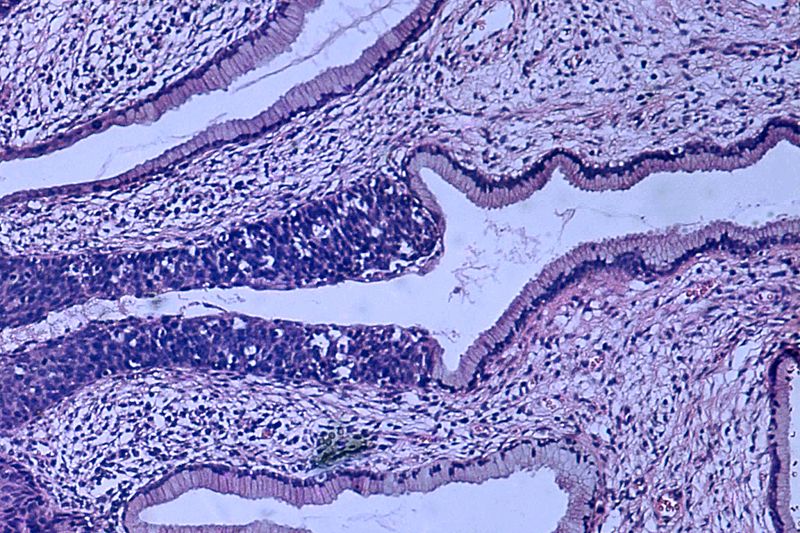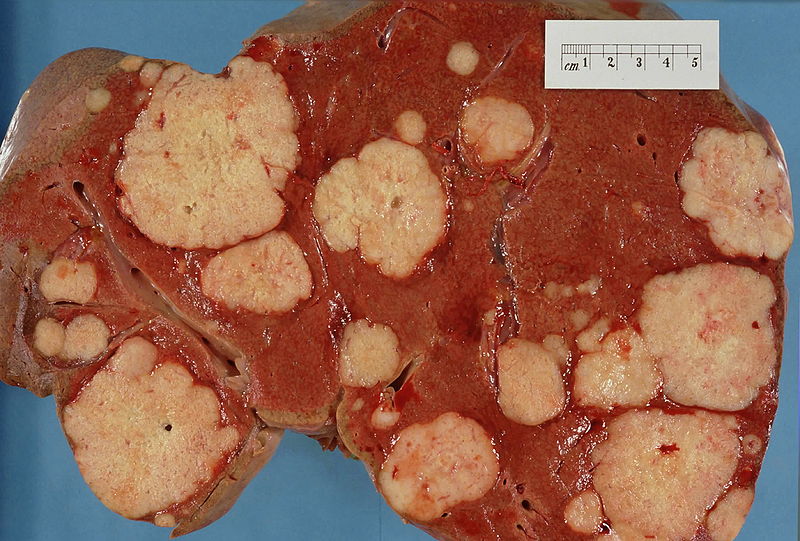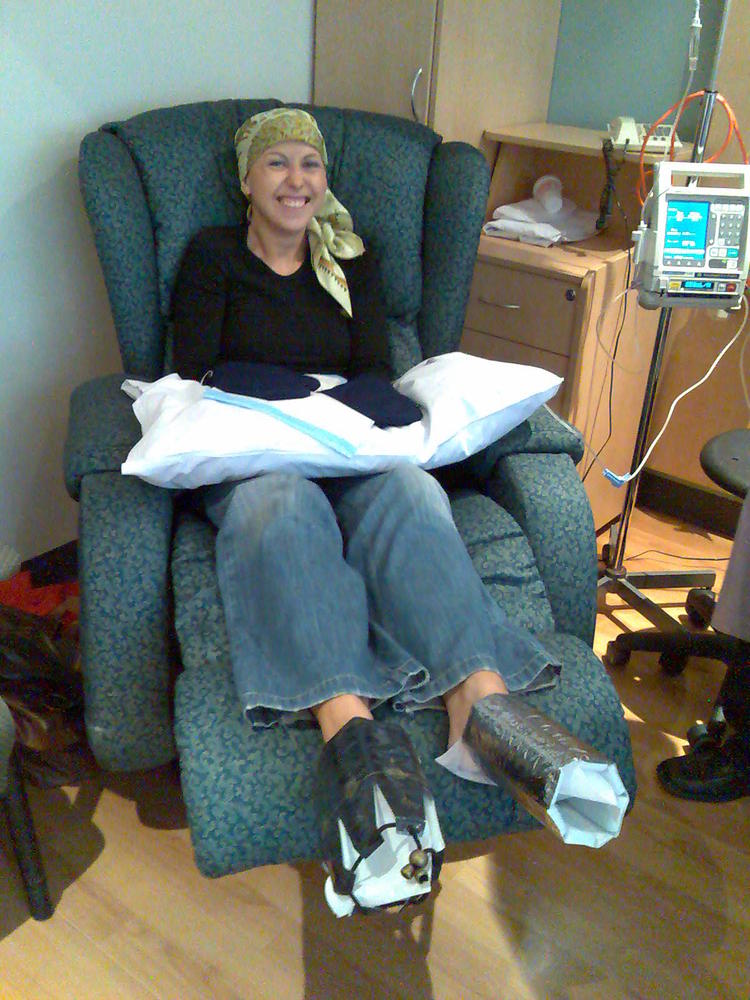The Hallmarks of Cancer
Interview with
Kat - 10 years ago, a seminal paper entitled "The Hallmarks of Cancer" was published in the journal Cell, examining the state of the nation in cancer research, and making some predictions for the future. Now I'm here at the NCRI conference in Liverpool which is the UK's biggest cancer conference, bringing together scientists, clinicians, everyone in the cancer research community from around the world. And I'm really pleased to be joined by one of the authors of that report. The two authors were Douglas Hanahan and Robert Weinberg, and here's Robert Weinberg with me today, and he's going to be talking at the conference about where we are 10 years on from the paper, so good afternoon. Hello.
Robert - Thank you for having me here. It's my pleasure.
Kat - That's great. Let's talk a little bit about your original paper, "The Hallmarks of Cancer." So, what did you and Doug actually look at in that paper?
 Robert - Well Doug Hanahan and I are scientists who are interested in understanding what causes cancer, how normal cells can become converted or transformed into cancer cells. One day, we were at a conference together in Hawaii, walking down the mouth of an extinct volcano, and we came to the notion that it might be very useful if we were to codify the principles by which normal cells become converted into cancer cells. The cancer research literature was vast, but we believe there was a small number of underlying principles by which we could explain the entirety of the cancer formation process. And Doug Hanahan came up with the title, "The Hallmarks of Cancer." There were six of them in fact.
Robert - Well Doug Hanahan and I are scientists who are interested in understanding what causes cancer, how normal cells can become converted or transformed into cancer cells. One day, we were at a conference together in Hawaii, walking down the mouth of an extinct volcano, and we came to the notion that it might be very useful if we were to codify the principles by which normal cells become converted into cancer cells. The cancer research literature was vast, but we believe there was a small number of underlying principles by which we could explain the entirety of the cancer formation process. And Doug Hanahan came up with the title, "The Hallmarks of Cancer." There were six of them in fact.
Kat - So what are these six fundamental principles of cancer cells?
Robert - That cancer cells stimulate their own growth; that they're resistant to inhibitory signals that might otherwise stop their growth; that they can proliferate, they can multiply forever; that they can engender the growth of blood vessels into tumours, to supply nutrients to the tumours; that they can become resistant to their own programmed cell death - sometimes called apoptosis; and that with the passage of time, they can become invasive and metastatic. That is to say, they can spread throughout the body of the cancer patient.
Kat - When you presented this gathering of ideas to the scientific community in your paper, how well was it responded to?
 Robert - Well, like most review articles, this one was such a review article, we expected it to be cited briefly and then disappear like a stone, thrown into a small pond, but in fact, it was cited more and more in the years since 2000. I believe, even 10s of thousands times much to our astonishment. We never expected this.
Robert - Well, like most review articles, this one was such a review article, we expected it to be cited briefly and then disappear like a stone, thrown into a small pond, but in fact, it was cited more and more in the years since 2000. I believe, even 10s of thousands times much to our astonishment. We never expected this.
Kat - It seems a bit strange to think that no one had actually sat down and thought about what is cancer actually like before that point.
Robert - Well, many people had thought about what cancer is like from many different perspectives, but we thought there might be a common perspective and a common set of rules by which cancer cells arise, and those are the rules we articulated. Now, 10 years later, we're doing an update on that and we're almost done writing that update on "The Hallmarks of Cancer" to begin to indicate what new insights have happened since then.
Kat - And so, where are we now? What's happened over the past 10 years? Did you actually make any predictions back then? Have they come true?
Robert - Well actually, we didn't make that many predictions but we have learned a lot in the past decade. Cancer research has thrived and we learn more and more about why cancer cells proliferate uncontrollably. One thing we've learned is that cancer cells must somehow evade destruction by the immune system. Another thing we learned is that cancers or tumours are complex tissues, and indeed contain as many distinct cell types as normal tissues do. And the various distinct cell types of the tumour interact one with the other, in order to create this ever growing tissue which we call a tumour.
Kat - We heard earlier that fantastic new research from Doug Fearon and his colleagues and it's really looking at the role of cancer, almost being like being a rogue organ. So you've not just got the cancer cells, but you've got all the supporting cells that have been hijacked into this tumour.
Robert - That encapsulates the finding precisely so. Still, we would like to be able in the future to mobilise the powers of the immune system in order to eliminate tumours, and that's not a place where we're at yet, even though people have been trying for two decades to direct the powers of the immune system to eliminate tumours that have arisen in the body of the cancer patient.
 Kat - You're now revisiting your work. You're writing a new paper, "Hallmarks of Cancer 2: The Revenge" or something. Have you thought of a name?
Kat - You're now revisiting your work. You're writing a new paper, "Hallmarks of Cancer 2: The Revenge" or something. Have you thought of a name?
Robert - I think it's just going to be, "Hallmarks Revisited." Nothing more dramatic and we're not going to make a follow up movie either.
Kat - And where do you think we're going to be going in the next 10 years? Will we be curing many more cancers and how is this research leading to that?
Robert - Well there's two areas of this research: One, what causes the cancer and two, can you use the findings on the causes of cancer, in order to develop new types of therapies. And in fact, over the last 30 to 40 years, we've learned an enormous amount about why cancer cells grow uncontrollably. If you would've asked me about that question three or four decades ago, I would've shrugged my shoulders and told you I have no idea. But now, we understand that in enormous detail, but unfortunately, only a small number of those insights have been converted into truly useful therapeutics. Over the next decade, we're going to see an explosion of developments in new types of drugs that are created which can act either on their own or more often, in concert with other drugs, to really wipe out tumours, or at least hold them at a small or slow state of growth that will be tolerable for the cancer patient.
 Kat - So this is the idea of much more targeted therapy that's aimed at the molecular faults in a tumour, rather than just, "Oh, it's that kind of cancer."
Kat - So this is the idea of much more targeted therapy that's aimed at the molecular faults in a tumour, rather than just, "Oh, it's that kind of cancer."
Robert - Precisely so. Many of the chemotherapeutics we use today were invented three and four decades ago, and are simply toxins that happen to kill cancer cells slightly more easily or readily than they kill normal tissue, but of course, they create a lot of side damage, side effects. In the future now, we will increasingly be able to tailor-make drugs that specifically hit the cancer cells and thus the tumour, without creating damage, without wreaking havoc in adjacent normal tissue.
Kat - And we've made a lot of progress in treating cancer over the past few decades if you look at the change in survival statistics, maybe even just over the past 20 or 30 years...
Robert - Yes, indeed.
Kat - ...many more people do survive cancer and live for much longer, but obviously, we have a lot further to go. Where would you like to see the state of cancer treatment and survival in 10 years?
Robert - Well, I would like to see solid tumours being treated more effectively. Right now, advanced solid tumours from the colon and the pancreas, and the lungs are really formidable enemies, and we don't really know how to stop them. It would be nice - I think it's even realistic to assume that 10 years from now, some of those tumours will be stopped in their tracks, caused to shrink. They may not be caused to totally disappear, but they will be kept at a small size that will render the patient fully normal in terms of his or her lifestyle, and will create a chronic - albeit, tolerable disease. That's a reasonable prospect 10 years from now, without promising any major miracles.
Kat - Now that's something absolutely fantastic to look forward to. That's Robert Weinberg from MIT.









Comments
Add a comment